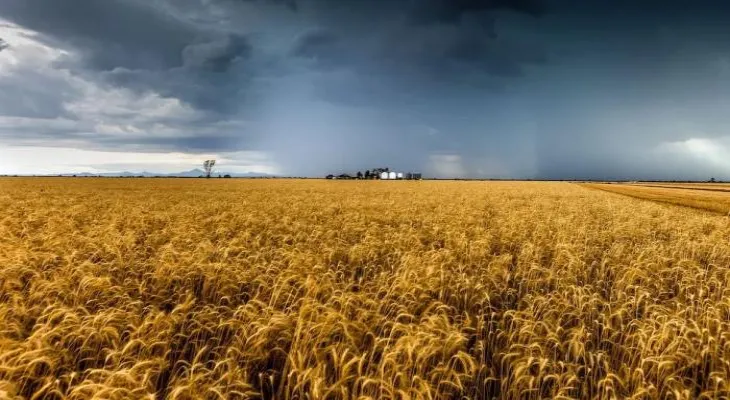Search here
Newspaper
Search here

Arab Canada News
News

Published: November 29, 2022
Wheat farmers in eastern Australia are battling floods and crop pests as they prepare for harvest. But they now face another challenge: damaged and closed roads and railways.
Australia is one of the largest wheat-exporting countries in the world, used in bread and pasta production.
Amid current crises and challenges, buyers were looking forward to a plentiful harvest to support the limited global supplies. However, heavy rains and floods in the east mean a large portion of the crop may only be suitable for livestock feed.
Deterioration of wheat shipping routes
Shipping routes in parts of eastern Australia have deteriorated after months of rainfall, with an estimated 10,000 kilometers of roads affected in New South Wales alone, making the situation in the region "extremely dangerous."
Wheat calms amid a turbulent world.. "Temporary survival" from war and weather shocks
Some roads in Victoria are at a stage where heavy machinery cannot cross, so even if there are crops ready for harvest, it may be difficult to access them due to road conditions. Farmers are essentially trying to reach their fields, or once the grains are harvested, they move trucks to warehouses.
The main food commodity.. urgent rescue sought
On their part, the farmers' group "Green Growers" called on November 29, 2022, for the government to provide urgent funding for truck routes to avoid significant delays and logistical problems as the harvest season approaches.
Rail options do not seem much better, as the main lines connecting storage sites to eastern ports have been closed for weeks due to flooding, which earlier this month caused a freight train to derail and blocked a main road from Adelaide to Melbourne for nearly a week until it was repaired.
Poor countries.. food versus the interests of developed countries
This halt increases pressure on fragile supply chains ahead of what is supposed to be the busiest time of year. But due to rain and mud, the pace of harvest has slowed considerably compared to the previous year.
Data from "Green Corp" shows cumulative deliveries on its network dropped by 56% and 54% in the week ending November 28 in New South Wales and Victoria respectively.
Food disaster in the world's second-largest wheat exporter
A new study revealed that global warming in the Indian Ocean around climate patterns has shifted towards drier conditions across Australia’s globally important wheat belt.
Global warming has caused a sharp decline in yields over the past three decades. Scientists from Australia and China warned that as global warming continues, wheat growing conditions will become more difficult.
The study, published in the journal "Nature Food," analyzed various climate phenomena affecting rainfall in Australia since the late 19th century and used models to see how this impacted wheat crops.
In fact, global warming has caused a shift in the climate pattern known as the Indian Ocean Dipole, which when in a positive phase can starve wheat farmers of rain.
The study comes at a time when Australia is heavily affected by the negative alternate phase of the IOD phenomenon contributing to heavy rains across the southern and eastern parts of the continent.
Australia is one of the main wheat exporters globally, accounting for more than 10% of world trade.
The country's wheat belt includes southwest Australia, southeast Australia, western Victoria, and vast areas of central New South Wales and Queensland, west of the Great Dividing Range.
According to estimates from Icon Commodities brokerage last June, farmers in Australia, which became the world’s second-largest wheat exporter in 2021-2022, finished planting this year’s wheat crop on an area of 35.7 million acres, the largest area ever.
Although it is too early to determine the total size of the 2022-2023 crop being harvested by year-end, traders and analysts have started to expect total production between 30 and 35 million tons, not far from the 2021-2022 harvest which exceeded 36 million tons.
Asian buyers heavily rely on Australian wheat, with traders mentioning that China is the largest buyer this year.
Comments